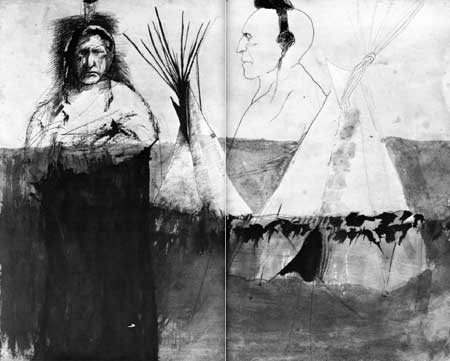|
LITTLE BIGHORN BATTLEFIELD National Monument |
 |

Custer Battlefield Today
Almost at once the scene of Custer's defeat became an important tourist attraction. Army officers and even Indian veterans of the battle visited it from time to time, and many Easterners en route to Yellowstone National Park or the Pacific Northwest on the newly built Northern Pacific Railway took time to journey up the Bighorn and Little Bighorn to view the historic spot. Troops from Fort Custer, established at the mouth of the Little Bighorn in 1877, served as the first custodians.
One year after the battle, Keogh's old company of the 7th Cavalry returned to the field, carefully reburied the dead where they had fallen, and placed wooden stakes over each grave. The bodies of 11 officers and two civilians were exhumed and shipped to the homes of relatives for reburial. Custer's remains were reinterred with impressive ceremony at West Point Military Academy, N.Y., on October 10, 1877. The grave is prominently located near the Old Cadet Chapel and is designated by a large but dignified marker.
A log memorial erected in 1879, when the battlefield was designated a National Cemetery, stood atop Custer Hill for 2 years. It was replaced in 1881 with the present granite monument bearing the names of those killed in the battle. The remains of the soldiers were then gathered from their individual graves and reinterred in a common grave around the base of the memorial. In subsequent years the wooden stakes indicating the places where the soldiers fell and were originally buried were replaced with white marble markers.

|
|
Last Modified: Sat, Sep 28 2002 10:00:00 pm PDT |


